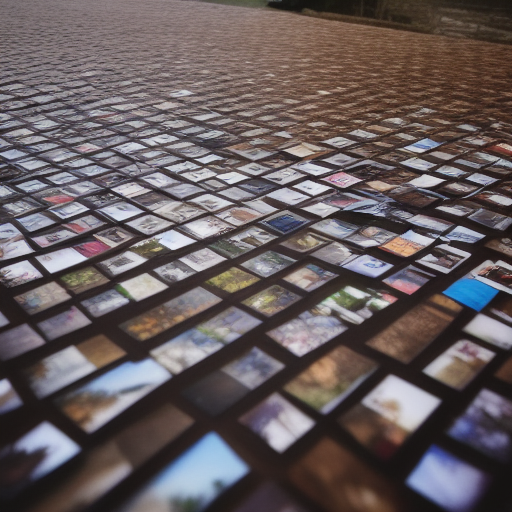Mastering Digital Image Management: A Guide for Hobbyist Photographers Using a Digital Asset Management System on Windows
As a hobbyist photographer, you probably find yourself amassing a growing collection of digital images. Organizing, editing, and managing these images can quickly become overwhelming. Enter Digital Asset Management (DAM) systems – a game-changer for photographers looking to streamline their workflow, keep their collections organized, and ensure that their precious shots are easily accessible. Here’s a guide on how to effectively manage your digital images using a DAM system on Windows.
Understanding Digital Asset Management (DAM)
A Digital Asset Management system is a software solution designed to store, organize, retrieve, and manage digital files. For photographers, this means a single software where you can keep all your images, videos, audio and Office documents, PDF files and other digital documents organized and managed.
In IMatch, you can view your files, find any file in seconds, add and edit metadata like keywords, descriptions and dates, perform face recognition, batch processing, batch renaming and organize your files in a myriad of ways. If you use IMatch as your DAM, you can freely choose which software you use to edit your images or perform RAW conversion. It is an excellent choice when you’re looking for a robust, performant, customizable, standard-compliant and affordable DAM for Windows.
Choosing the Right DAM System
Selecting the right DAM system is crucial. Consider the following factors:
- Ease of Use: As a hobbyist, you want a system that’s intuitive and doesn’t require extensive training.
- Features: Look for features like tagging, metadata support, editing capabilities, and integration with other software.
- Customizability: Make sure your DAM integrates into your workflow and software environment
- Cost: Ensure the system fits your budget. Some DAM systems offer free versions or trials.
- Standard Compliance: Ensure that your DAM produces standard-compliant and rich metadata that can be used by other software, services and web sites.
Setting Up Your DAM System
- Installation: Download and install your chosen DAM software on your Windows machine. Follow the installation instructions carefully.
- Initial Import: Import your existing collection of digital images. This may take some time, depending on the size of your library.
This is also where you’ll usually notice issues with metadata, especially when you process very old images or images which have been processed by a variety of software over the years. IMatch includes tools to diagnose and fix problems with metadata. - Folder Structure: Decide on a folder structure that makes sense for you. This could be by date, event, or theme. Most users these days prefer a date-based organization, with top-level folders per year, below that a folder per month and day. IMatch is agnostic, it works with every folder structure you prefer.
Organizing Your Images
- Tagging and Metadata: Use keywords (sometimes named tags) and metadata to make your images searchable. Include information like date, location, subject matter, persons and event.
- Ratings and Flags: Many DAM systems allow you to rate and flag your images. Use these tools to highlight your best shots and mark images that need editing or deletion. IMatch uses the XMP rating and label metadata fields to ensure interoperability with other software like Lightroom, DxO or Capture One.
- Collections and Albums: Group related images into collections or albums. This helps keep similar photos together and makes them easier to find.
IMatch’s unique category system is perfect for manually and automatically organizing images and other files by any criteria you like. From technical data like camera model or lens to automatic organization by keywords or the persons shown in photos.
Batch Processing
- Batch Renaming: Use your DAM to rename large sets of files to match your naming convention. Your DAM of choice should offer flexible batch-renaming capabilities. In IMatch, the Renamer performs these tasks. You can even automatically create backup copies of your files, create folder on-the-fly and move files into these folders.
- Batch Processing: Exporting files in different formats and sizes is a must-have for any DAM.
- Batch Printing: Creating contact sheets, photo books or PDF files from your images with a lot of flexibility and minimal effort is an often sought-after feature in DAM software. Check out the Design & Print feature in IMatch for a top-of-the-line implementation.
Best Practices
- Consistent Naming Conventions: Use a consistent naming convention for your files and folders. This makes it easier to locate specific images. Not only in your DAM, but also in Windows Explorer and other software.
- Controlled Vocabulary: Use a self-made or commercially available set of standardized keywords. This ensures that you use the “same keyword for the same thing” which in turn improves consistency and searchability.
- Utilize Metadata: Always fill out metadata fields when importing new images. This saves time later when searching for specific photos.
- Stay Organized: Develop a routine for importing, tagging, and organizing your images immediately after a shoot.
Conclusion
Effectively managing digital images as a photographer on Windows is all about organization, consistency, and using the right tools. A Digital Asset Management system like IMatch can transform your workflow, making it easier to find, edit, and share your images. Whether you’re just starting out or have a massive collection, implementing a DAM system will help you focus more on your passion for photography and less on the hassle of managing your digital assets.
By following these guidelines and making the most of a DAM system, you’ll be well on your way to a more efficient and enjoyable photography experience. Happy shooting!
To find more information about the IMatch Digital Asset Management system (DAM), follow this link.

Mario M. Westphal is the developer of IMatch, the digital asset management system (DAM) for Windows. He has a strong background in software development and photography, gained through working for over 30 years in the field for many clients. His special interests are photography, music. literature and of course software development, with a strong focus on digital asset management, database systems and image metadata. He hails from Germany.

